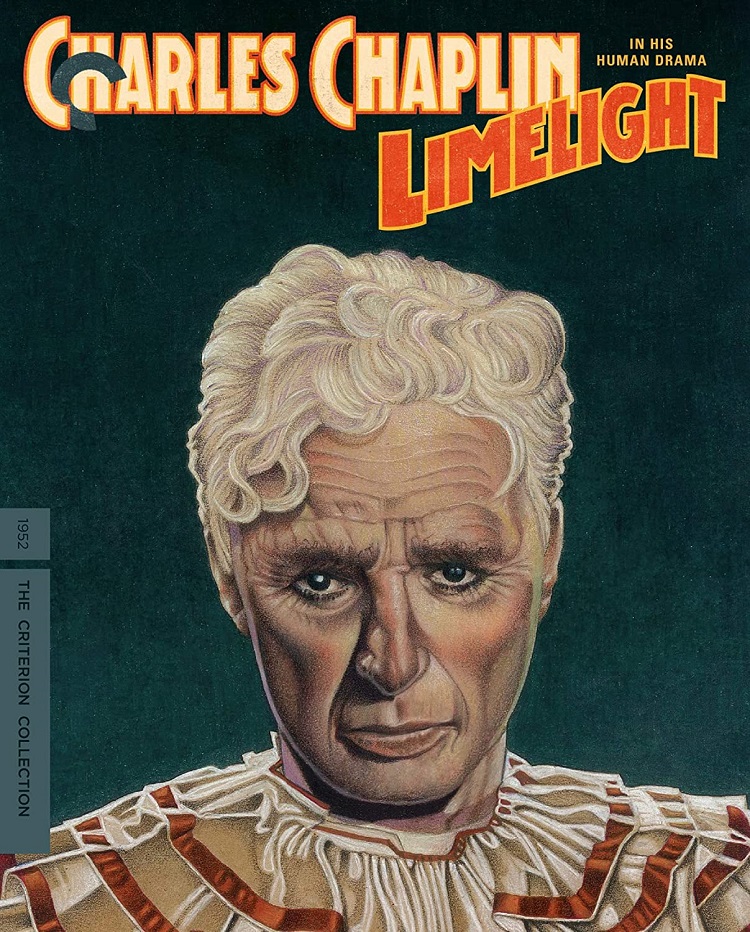
My Chaplin journey hasn’t been linear. I didn’t start with the silent shorts and work my way through The Kid (1921) and onto A Countess From Hong Kong (1967). It was a rambling journey that went forwards and backwards through highlights of his spectacular career with Criterion including Modern Times, The Great Dictator, City Lights, and The Gold Rush. In many ways the other films were reflections and parables of the times Chaplin was living in. The newest Criterion Blu-ray release is Limelight from 1952. It’s subtitled “in his human drama” and this film is his most personal story.
The world was a very different place for Chaplin in 1952. He had been an important artist from the very earliest days of Hollywood before the days of WWI. He did some of his best work in silent films even after talkies had taken over. He worked through the years of the Great Depression trying to make people laugh. The darkest days of World War Two brought out brilliance in him through The Great Dictator. Post WWII, the world was a much different place. And Chaplin was exiled because he was accused of being a Communist sympathizer. His previous 40 years of accomplishments were thrust aside with such unfounded accusations. The artist turned out a film that looked deeply inward.
This film is just two years after Sunset Boulevard and they aren’t similar as much as parallel. The post-war changes to Hollywood and the world left many of the older artists out in the cold. The film starts in 1914 with Chaplin as Calvero, a drunk clown who has passed his best days. At his lowest point, he is “saved’ by a young singer played by the beautiful Claire Bloom. The movie follows the journey of the two – the young singer looking to get her break and the old clown looking to recapture one more chance on the stage. Unlike, Norma Desmond, Calvero is aware that his time is waning but wants the adulation one more time. He gets reunited with his old partner, played by Buster Keaton. It’s touching to see the two masters together on film.
Chaplin had created what was considered the most recognizable character in history in “The Tramp”. But those days were a decade behind him now and must have felt completely forgotten. This movie addresses that melancholy. As Calvero, he doesn’t want to be what he was in his heyday. He realizes that his time has passed. But there is a frustration at being thrust aside without the proper goodbye. The limelight was the pre-electrical lights way of lighting and spotlighting an actor. The light ran bright and hot but would fade away. Calvero wants the adulation one more time – to leave the stage to applause. With everything happening in his life, one can easily imagine that this is what Chaplin is searching to say. Just applaud me into retirement. It would not be his last movie but it is certainly a period at the end of a long paragraph of his life.
The film doesn’t have the feel of other movies from the early ’50s. It’s deeply emotional and personal. I’d probably compare it to the feel of Citizen Kane as far as the personal reflection on life towards the end of it. Terry (Clair Bloom) becomes his muse and a symbol of his early life. She is his way to pass the torch. The setting of the film on the verge of WWI is no accident. It was the start of the most creative period of Chaplin’s life. And for the characters in the film we know that their lives will soon change in ways that they can never imagine. The film ends with success followed by failure. That was a facet of his life in the through the World Wars and also symbolic of where his life was in the 1950s.
I’m reminded of City Lights in the love story. It’s heartbreaking and realistic. Calvero is both motivated and melancholy about his love of Terry. The old man and the young girl – the old clown and the youthful ballet dancer. The life of an artist like that in both cases is fleeting. They have their time and then it is lost to the youth. He cannot let her be taken in by love for him. He knows he must push her towards a younger man despite their true love. Like City Lights, love is conveyed in very small exchanges – it’s a look, the way his hand covers hers but his eyes have to look away. These scenes feel so personal in nature that you are almost embarrassed.
I had watched the previous Criterion Chaplin releases at least a couple times before the Blu-ray releases, but this was my first viewing of Limelight. It’s wonderful to discover such a personal piece through their releases. That’s always what I’m hoping to get from the Criterion Collection. They have consistently delivered with the Chaplin releases. The Blu-ray contains a video essay about Limelight, interviews with Claire Bloom and Norman Lloyd, a 2002 documentary on the film, two short films from 1915 and 1919, outtakes, trailers, audio recordings of Chaplin reading from his novella, and a nice set of essays in the booklet. You are not being shorted in the least with the disc.
You aren’t going to laugh the way you will with other Chaplin releases. It illustrates that laughs and tragedy aren’t separated by anything but a thin line. The personal film still rings true today because we all reach that point in our lives when we feel that alienation. There is the death of innocence of youth and we finally identify ourselves with the older generation. He sang it many years before in Modern Times but only here does he illustrate it perfectly….
“Smile though your heart is aching
Smile even though it’s breaking”